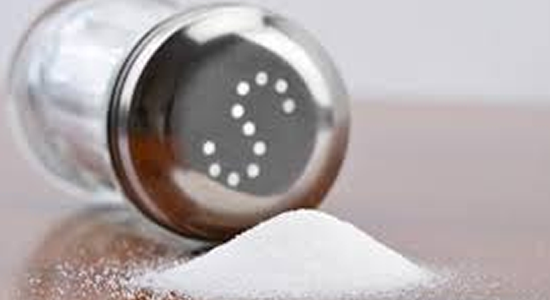A new research shows how a high-salt diet could result to excessive levels of interleukin-17 (IL-17) in multiple sclerosis (MS) patients, causing changes in endothelial cells that result in dementia.
These findings suggest that therapeutics targeting IL-17 may help halt the neurovascular damages of MS and other autoimmune diseases linked to high levels of IL-17.
Diets rich in sodium chloride are common among Americans, 90 percent of whom surpass the recommended 2,300 mg intake of salt per day. While such diets have been connected with an increased risk for cerebrovascular diseases and dementia, exactly how high levels of salt harm the brain remained unclear.
Eager to find out, researchers at New York’s Weill Cornell University fed mice a high-salt diet, either with 4 or 8 percent of salt, corresponding to a 8- to 16-fold increase in salt content compared to a regular mouse diet.
“Although estimating salt consumption at the population level is difficult, this diet is comparable to the high end of the spectrum of human salt consumption,” researchers wrote.
Mice were fed for eight, 12 or 24 weeks. Using magnetic resonance imaging, researchers discovered that such a diet led to significant decrease in cerebral blood flow (CBF) in the brain’s cortex (by 28%) and hippocampus (by 25%) — two areas responsible for learning and memory.
Moreover, in rodents fed a high-salt diet during 12 weeks, researchers detected dysfunctions in the endothelium, the thin membrane composed of endothelial cells that line all blood vessels. The endothelial cells also decreased the production of nitric oxide, a gas that relaxes blood vessels and increases blood flow.
The endothelium’s altered function seems to be an effect of the high-salt diet as researchers ruled out other sources of endothelium damage, such as vascular inflammation.
The team then tested if they could reverse the damaging effects of a high-salt diet by feeding the mice a normal diet (with 0.5 percent salt). After 12 weeks of a high-salt diet, mice were then fed with a normal diet for another weeks.
When researchers looked again at the animals’ brains, they discovered that both the cerebral blood flow and endothelial function returned to normal.
Mice fed only a high-salt diet had “profound alterations in cognitive function that involve multiple domains,” researchers wrote. These animals performed considerably worse in object recognition, a maze test and nest behavior.
Returning to a normal diet rescued the animals’ performance to normal levels.
Other experiments showed that endothelial dysfunction and reduction in nitric oxide production were a consequence of the increased release of IL-17.
They finally pinpointed a molecule called ROCK as the one responsible for shutting down the production of nitric oxide. Il-17 suppressed nitric oxide production via ROCK. Using a ROCK inhibitor called Y27632, researchers were able to perk up the neurovascular and cognitive dysfunction induced by a high-salt diet.
Giuseppe Faraco, the study’s first author, in a press release said “The IL-17-ROCK pathway is an exciting target for future research in the causes of cognitive impairment.”



















